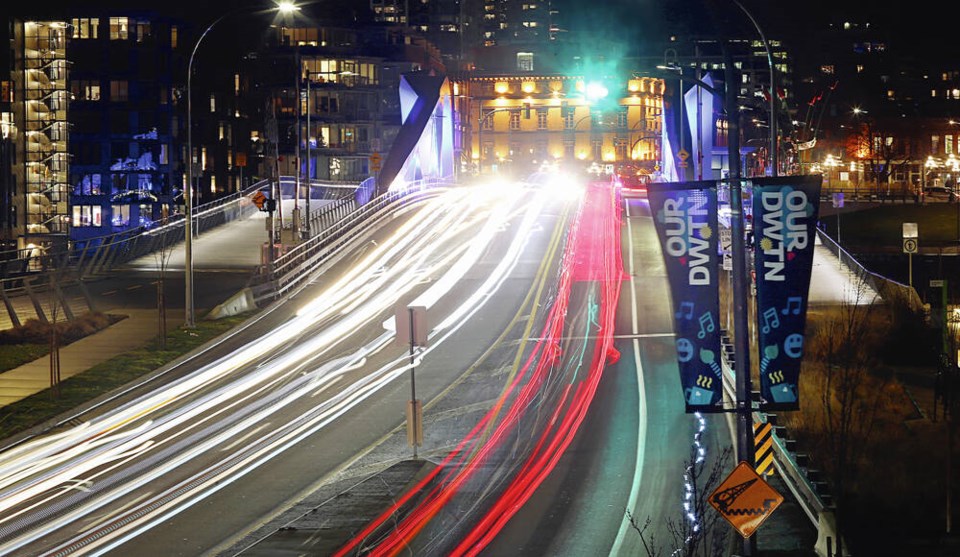Driving at night is challenging for even the best of drivers. That absence of light is coupled with the likelihood that some drivers often are willing to do more risky things when there are fewer drivers on the road. This includes speeding or driving after using alcohol or drugs, making the chances of a crash much higher than during the day.
About half of all fatal crashes occur at night. Seems logical, but remember night time traffic volumes are way less than in the daytime, making the fatality rate per kilometre triple that of daytime.
As a driver, your number one sense for safe driving is your ability to see. Around 90% of your ability to react to a driving situation is based on sight. After the sun sets, your peripheral vision, the ability to recognize colour, and depth perception shrink dramatically.
As your pupils enlarge, glare increases along with those weird halos which both impair vision and distract driver attention. Prescription glasses and contacts can also become less effective leading to nearsightedness.
No one is getting any younger and with that comes more chances of night blindness — a decreased ability to spot things in low light or other dark environments. Night blindness can be caused by such things as cataracts, astigmatism or myopia.
Night blindness greatly increases the risk for accidents because road hazards are much harder to spot, signs become harder to read and even one’s overall judgment starts to fail, caused by the inability to see properly.
Glare sensitivity is another hallmark of diminishing sight. Fighting off glare as you drive means your attention is diverted from actually focusing on the road ahead including the hazards which will inevitably be there.
To be safer driving at night start with your vehicle’s equipment. Make sure all your lights are working. For me, if one headlight goes out, I replace both of them. I’ve tried the one-at-a-time route only to have the second light pack it in within a couple of days.
Brake lights are absolutely vital. In the dark, you want to give that driver behind you clear warning that you are stopping. There are way too many burnt-out brake lights out there putting the rest of us at risk.
Remember, fog lamps work well — in the fog — but their dazzling intensity hurts the eyes of other drivers on clear nights.
Keep your windshield clean — really clean. Dirt smudges and scratches which are basically unnoticeable during the day can turn into serious barriers to the road ahead at night. This also means ensuring your washer fluid reservoir is always topped up all year.
Keep your speed down. Aside from it being one of the leading causes of crashes and fatalities, you run the risk of overdriving your headlights when it’s dark. Lighting the road in front of you is basically pointless if you’re driving so fast that you can’t react in time. Overdriving your headlights is nearly the same as driving without headlights.
Use your anti-glare features. That little switch at the base of your rear view mirror can significantly reduce the blast from those dazzle headlights which pull in behind you. In many late model tech-wise vehicles this is an automatic feature. Make sure it’s turned on.
Finally, if you’re telling yourself that it’s becoming harder to see at night when you’re driving, it might be time to go to “Plan B.” Consider asking a friend for a ride, use public transportation or if it’s not a truly necessary trip, wait until the sun comes up.
Regular vision checks, especially as we age, keeping your vehicle in good condition and driving sensibly are the keys to reduce the risk of night time driving.
Glove Box: Brian wrote in with a pet peeve about solid white lines. Too many drivers are ignoring them and he’s right. A quick reminder about road lines. Yellow lines divide roadways for traffic going in opposite directions. You can’t pass on a double solid line. You can pass on a single solid yellow line but only when it’s safe. White lines define lanes for traffic moving in the same direction. Obviously, a broken white line means it’s ok to change lanes, but crossing a solid white line is a no-no and can cost you $109 and two demerit points. So what about if you have to cross a white line in order to give cyclists that new 1- to 1.5-metre buffer zone just prescribed by the latest motor vehicle act amendments? Section 157.1 now says that when you take action to comply with the new bike buffer zone rule you no longer contravene other specified sections of the act, i.e. crossing a solid line.



